You are viewing 1 of your 1 free articles
Finding space behind opponents' defence
During this session, we’re looking for coordinated, opposite runs between players to create the space behind the defence without being offside, the right timing and passes to reach them, and the patience to wait for the right moment to pass the ball deep.
| Area |
Up to two-thirds of pitch |
| Equipment |
Full size goals, mini goals, mannequins |
| No. of Players | 20 + 2 GKs |
| Session Time |
Up to one hour including rest Warm-up - 15 mins Possession with offensive zone - 12 mins Finishing: run behind defence - 12 mins Defending depth and runs behind defence - 16 mins |
During this session, we’re looking for coordinated, opposite runs between players to create the space behind the defence without being offside, the right timing and passes to reach them, and the patience to wait for the right moment to pass the ball deep. I’ve used this session in all the clubs I’ve worked with because it’s important for the players to learn to run, at the right moment, away from the ball, to do that in coordinated runs with two or three players to open up a defence, and to give the right ball (in moment, pace, angle).
We run this or a similar exercise at least once a week but in different ways, because there is a lot of work in the timing of the runs together and in the details, so you start with the basics and build from that to make the challenge bigger.
POSSESSION WITH OFFENSIVE ZONE
After a 15-minute warm-up, set up in one half of the pitch, with three mini goals at both ends, and coaches equipped with balls behind the mini goal line. We play reds versus blues. Stopping the ball in the offensive (red) zone scores a point [1a].
[1a]
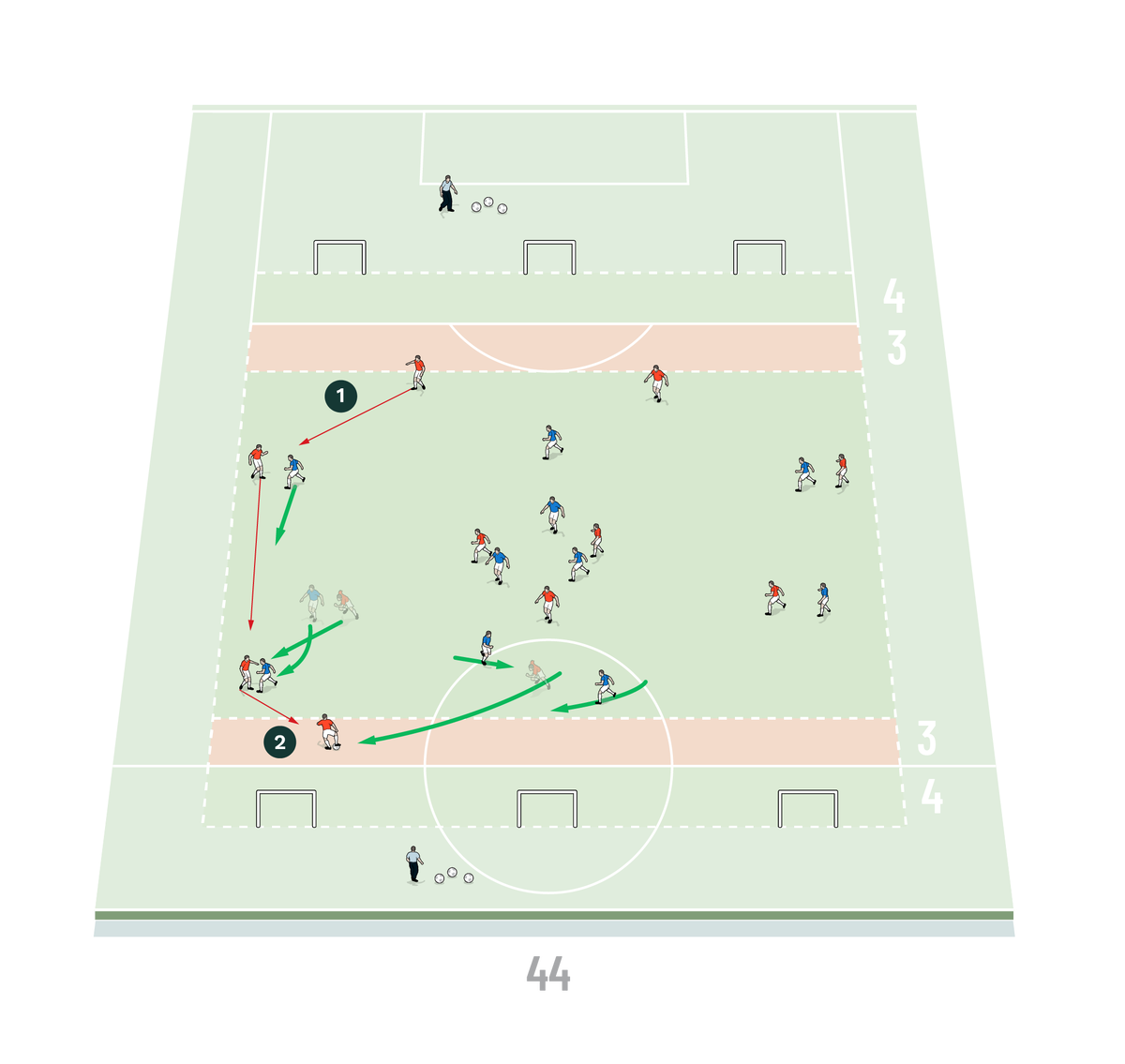
-
Red team in possession and on attack
- Red team stop the ball in offensive zone and get a point
Scoring in the mini goals in one touch from the offensive (red) zone scores three points [1b]. Defenders cannot enter the red zone. “Camping” would be offside and not allowed. After a goal or a point is scored, the opposing team gets a new ball from the coach. Run this in two sets of six minutes.
[1b]
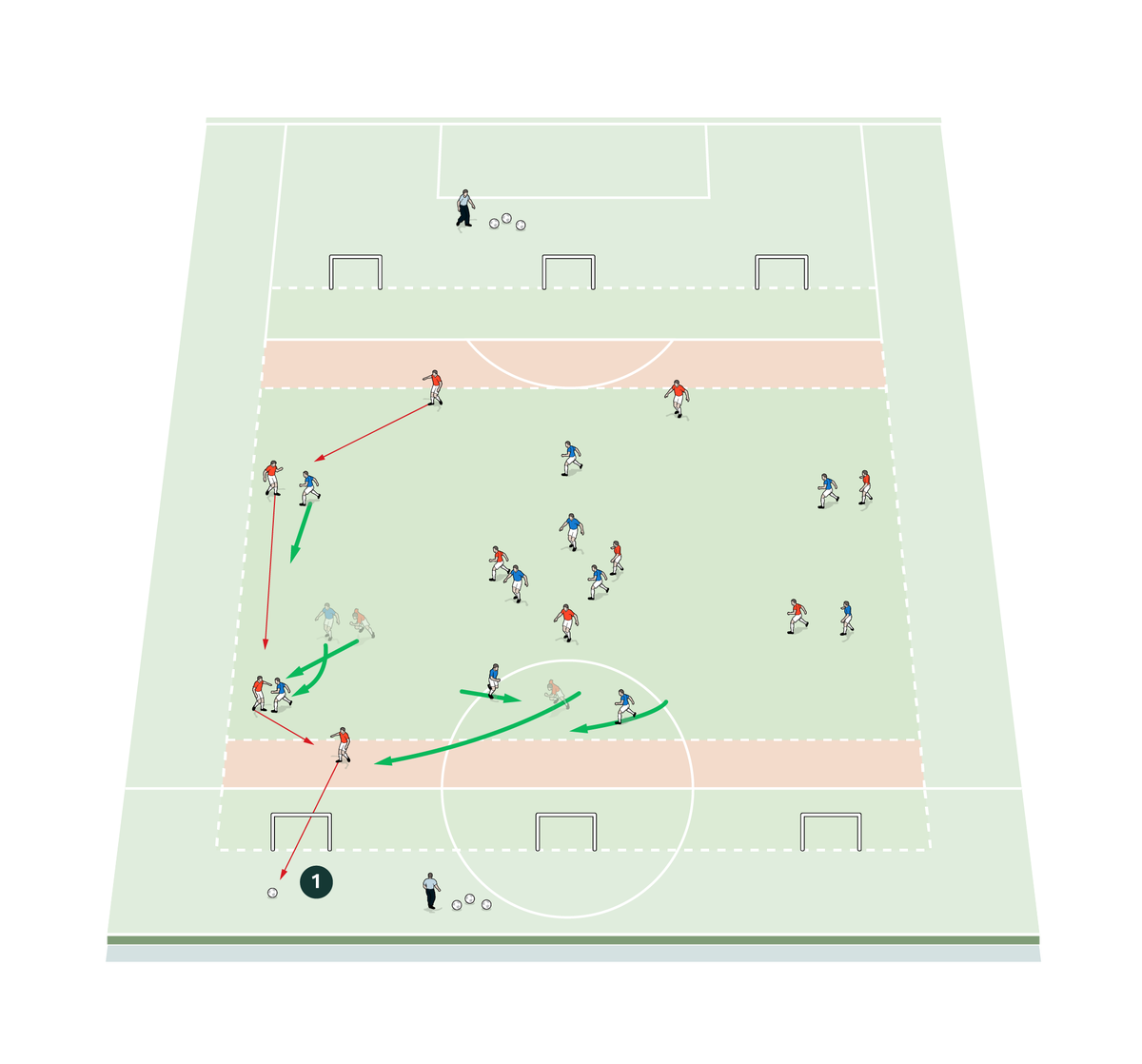
-
Red team score in one touch in mini goals from offensive zone and get three points
FINISHING WITH RUNS BEHIND DEFENCE
Set up in two groups on each wing. (The groups will swap so they work on each option down both sides.) For option A, most of the players are spread equally between the cones by the centre circle; one runner is placed by the mannequins. The players by the cones exchange four passes as shown [2a].
[2a]

-
Red players exchange four passes at the cones
The fifth pass goes over the mannequins towards the runner, who needs to be making contact with the passer. We are not playing offside here; the important thing is timing. We are looking for a good technical finish, putting the ball in the corner of the net [2b].
[2b]
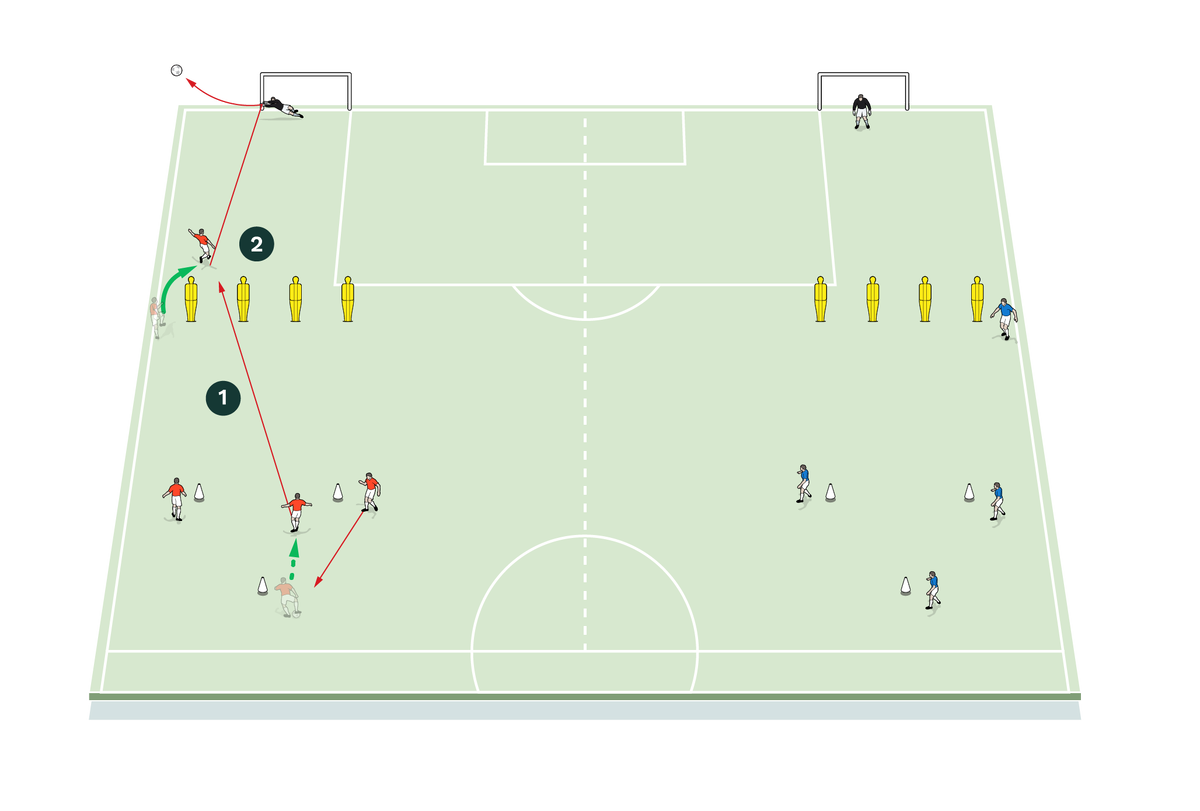
-
Fifth pass goes over mannequins to running player
- Running player shoots into corner of net
For option B, after the first four passes, the passer plays it on the ground through the mannequins towards the runner [2c]. (Here we need to make more space between the second and third mannequins.) We run this in four sets of three minutes.
[2c]
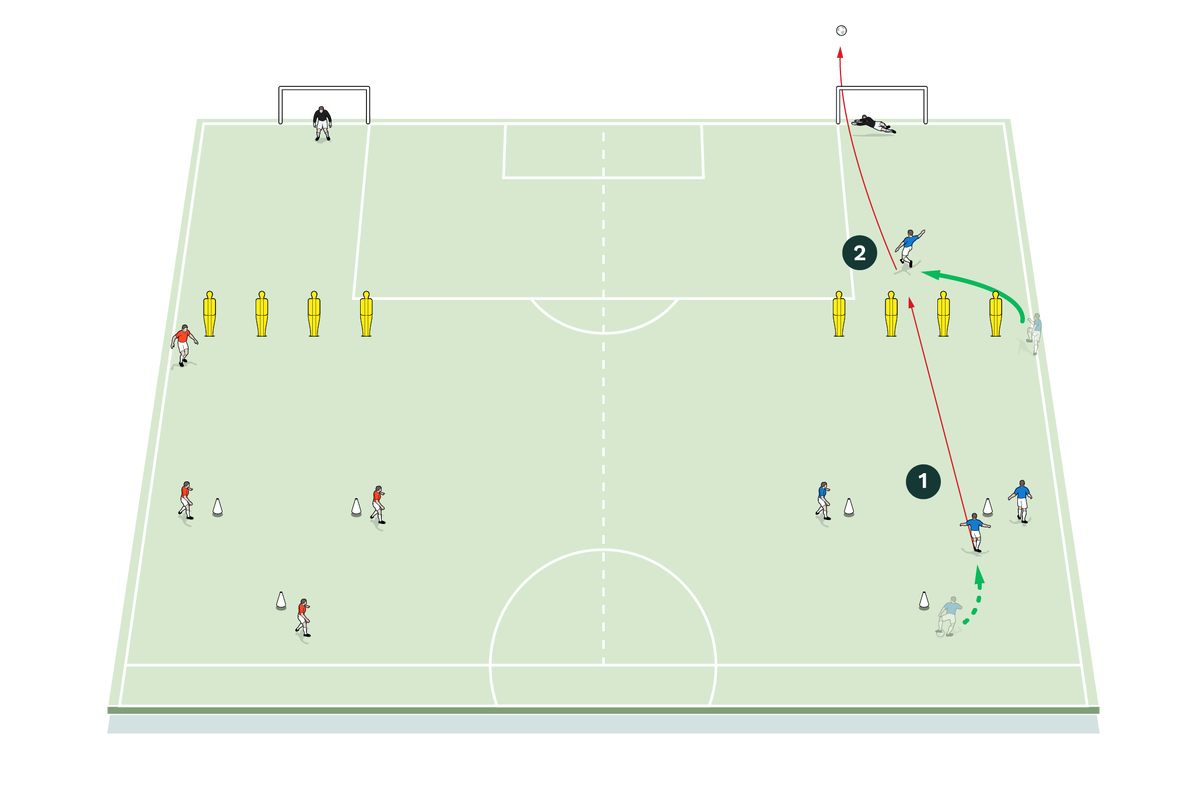
-
After exchanging four passes, blue player in possession plays on ground through mannequins to runner
- Running player shoots into corner of net
DEFENDING DEPTH
We set up in approximately two-thirds of the pitch, with full size goals at each end. The offside line is at 18 yards, and the black zone is an area where nobody at all can enter. One defender can defend inside the 18-yard box. When a team gets into the attacking red zone, they have a maximum of two touches before they must cross the ball [3a].
[3a]
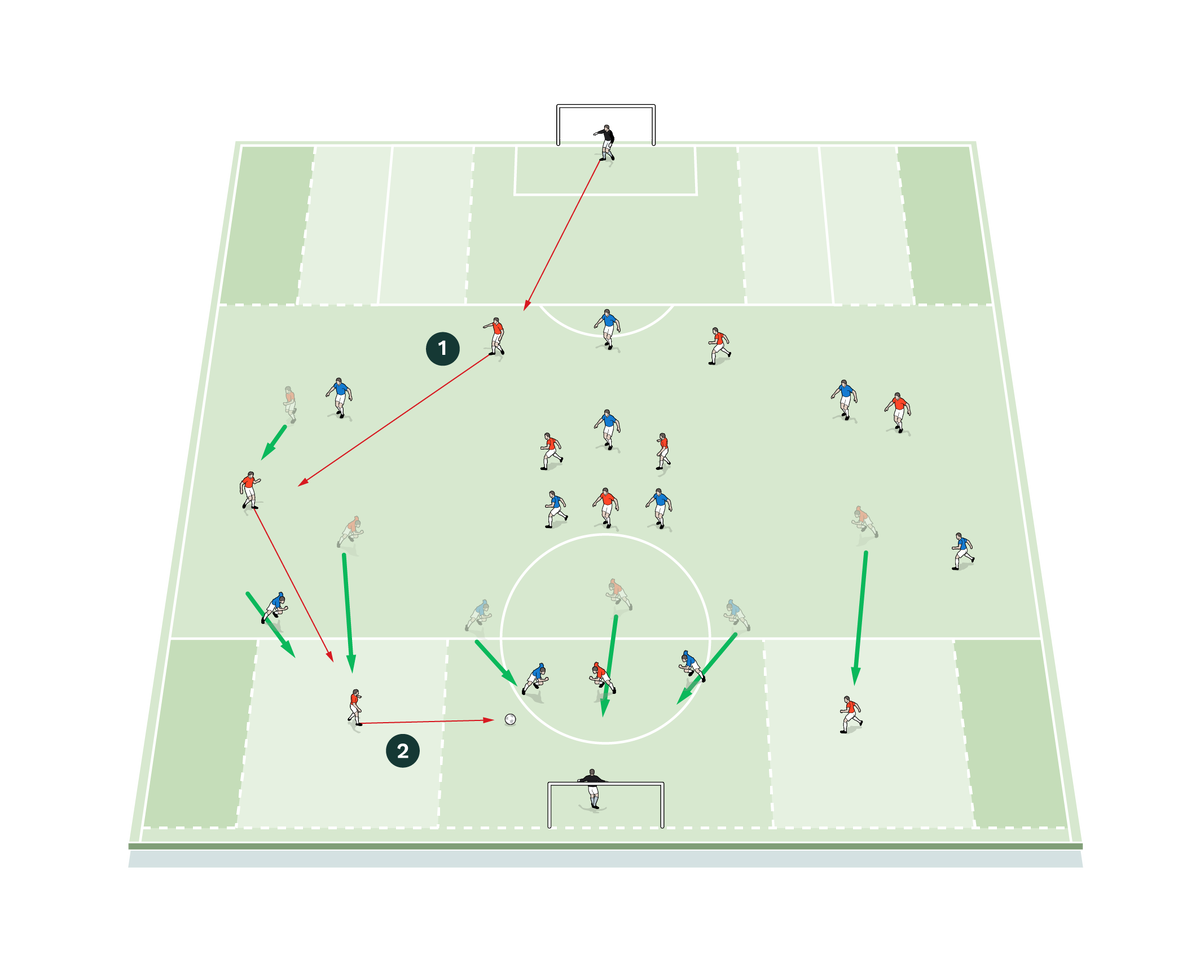
-
Red team attacks
-
Red player crosses the ball within two touches
If they pass into the 18-yard area, they have two touches before an effort on goal. If they score in one touch, they get double points [3b]. Run this in two sets of eight minutes. Both teams are set up in 4-2-3-1 formation in this example, but one can set up differently depending on the opponents for the coming matchday.
[3b]
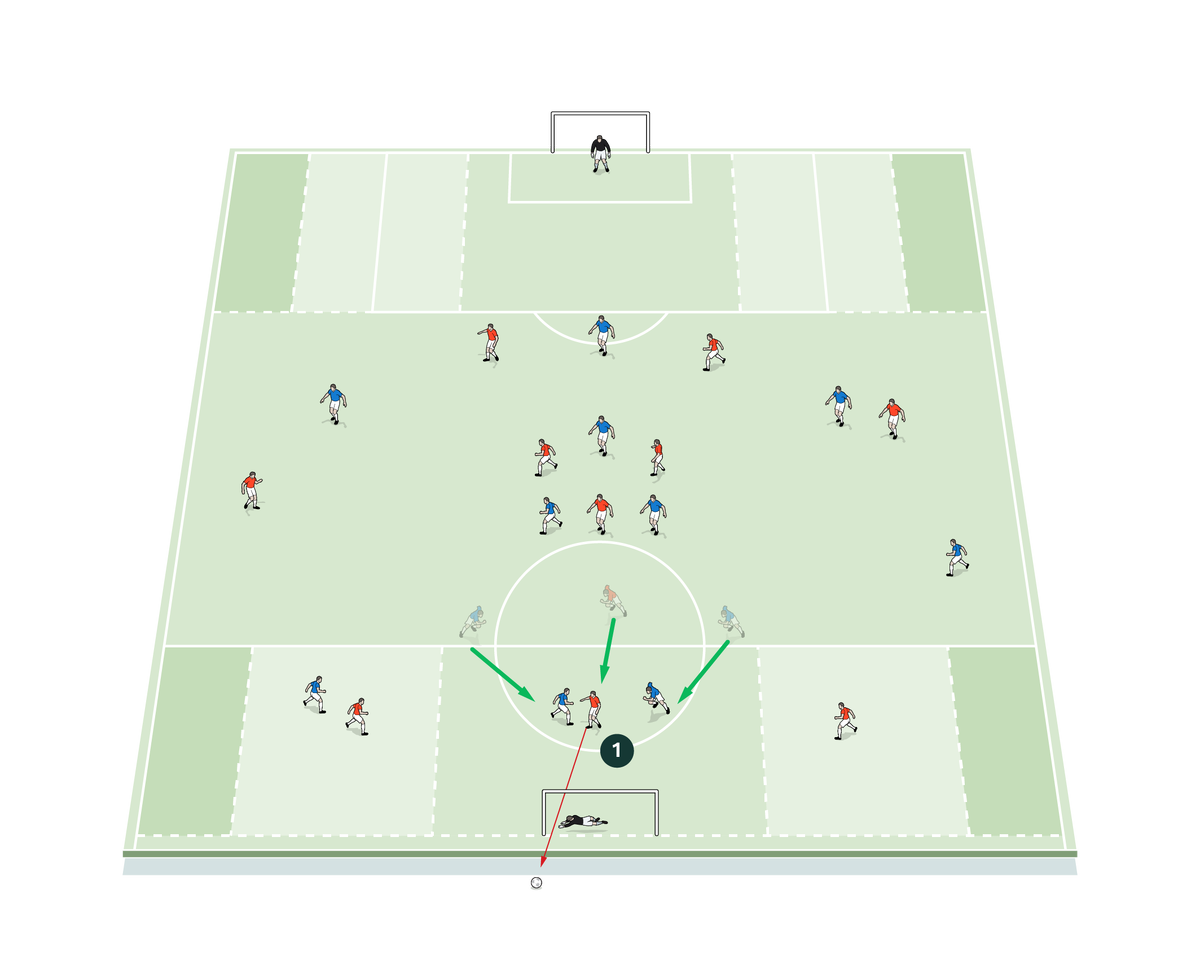
-
Red player scores with first touch and gets double points
Related Files
Editor's Picks
Deep runs in the final third
Using the goalkeeper in build-up play
Pressing principles
Intensive boxes drill with goals
Penetrating the final third
Creating and finishing
My philosophy
Pressing initiation
Compact team movement
Coaches' Testimonials

Alan Pardew

Arsène Wenger

Brendan Rodgers

Carlos Carvalhal

José Mourinho

Jürgen Klopp

Pep Guardiola

Roy Hodgson

Sir Alex Ferguson

Steven Gerrard
Coaches' Testimonials

Gerald Kearney, Downtown Las Vegas Soccer Club

Paul Butler, Florida, USA

Rick Shields, Springboro, USA

Tony Green, Pierrefonds Titans, Quebec, Canada
Join the world's leading coaches and managers and discover for yourself one of the best kept secrets in coaching. No other training tool on the planet is written or read by the calibre of names you’ll find in Elite Soccer.
In a recent survey 92% of subscribers said Elite Soccer makes them more confident, 89% said it makes them a more effective coach and 91% said it makes them more inspired.
Get Monthly Inspiration
All the latest techniques and approaches
Since 2010 Elite Soccer has given subscribers exclusive insight into the training ground practices of the world’s best coaches. Published in partnership with the League Managers Association we have unparalleled access to the leading lights in the English leagues, as well as a host of international managers.
Elite Soccer exclusively features sessions written by the coaches themselves. There are no observed sessions and no sessions “in the style of”, just first-hand advice delivered direct to you from the coach.









